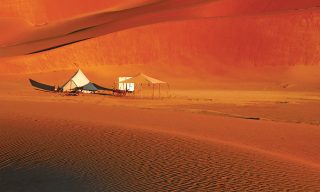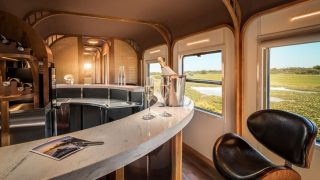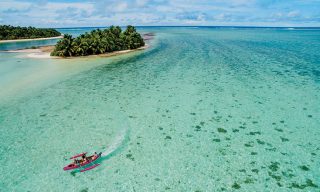The sultanate of Oman is a land of rugged mountains, shimmering shorelines, and vast, trackless desert. Throw in a pair of sophisticated new resorts, and you’ve got the makings of an unforgettable Arabian adventure.
“Welcome to the moon!” our driver Nabhan Said Al-Nabhani smiled wanly over his shoulder as we raced across the flat, sunblasted wastes of central Oman’s Ash Sharqiyah region. It had been three hours since we stopped for lunch at Nizwa, and the terrain we’d been driving through ever since—an endless gravel plain broken only by the occasional dust-blown settlement or lonely roadside mosque—had indeed assumed a lunar-like quality. Or possibly Martian? Either way, Nabhan had begun fretting that we might be bored, as though the monotony of the visuals was somehow his responsibility. He needn’t have worried: this road trip was my idea.
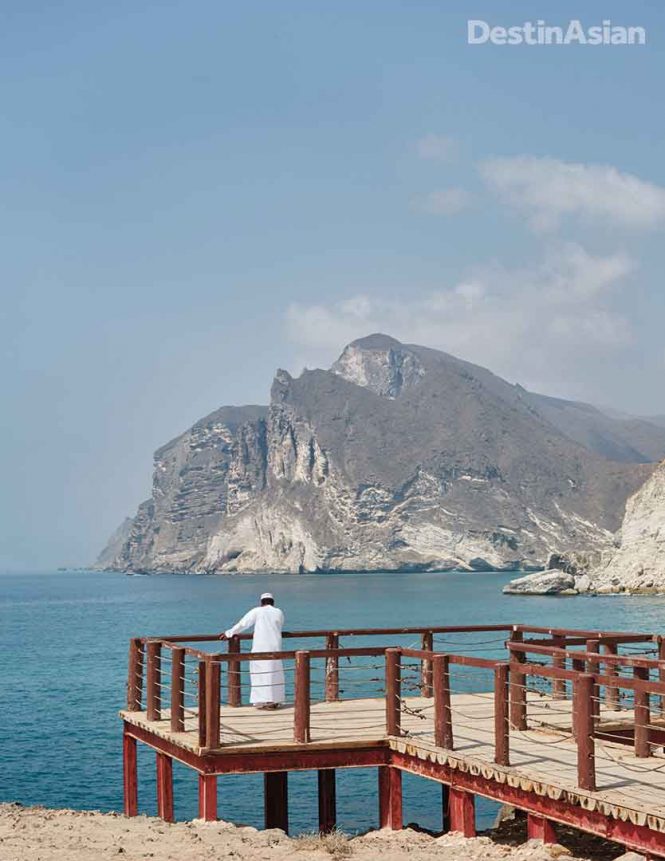
The craggy coastline at Mughsail Beach, a 40-minute drive west of Salalah. All photos by Martin Westlake.
When I first decided to come to Oman to try out a pair of newly minted Anantara resorts, it seemed that flying between the two—one perched in the mountains outside Muscat, the other in the southern port city of Salalah—was the only practical option. After all, they were separated by almost a thousand kilometers of desert. Then one of the properties suggested we add a couple of nights to our itinerary and make a proper overland tour of it, bunking down at an encampment in the fabled Wahiba Sands before heading to Salalah by way of Duqm. It sounded like a fine plan. But my photographer friend Martin and I could only spare one extra night, putting the Wahiba dunes out of reach. So we settled instead on this mad dash through the moonscape of Ash Sharqiyah, which, after a few unremarkable pit stops and one remarkable sand storm, finally brought us into Duqm around sunset. With that interminable stretch of asphalt behind us, I steeled myself for tomorrow’s push to Salalah—another eight hours on the road. Oh, man.
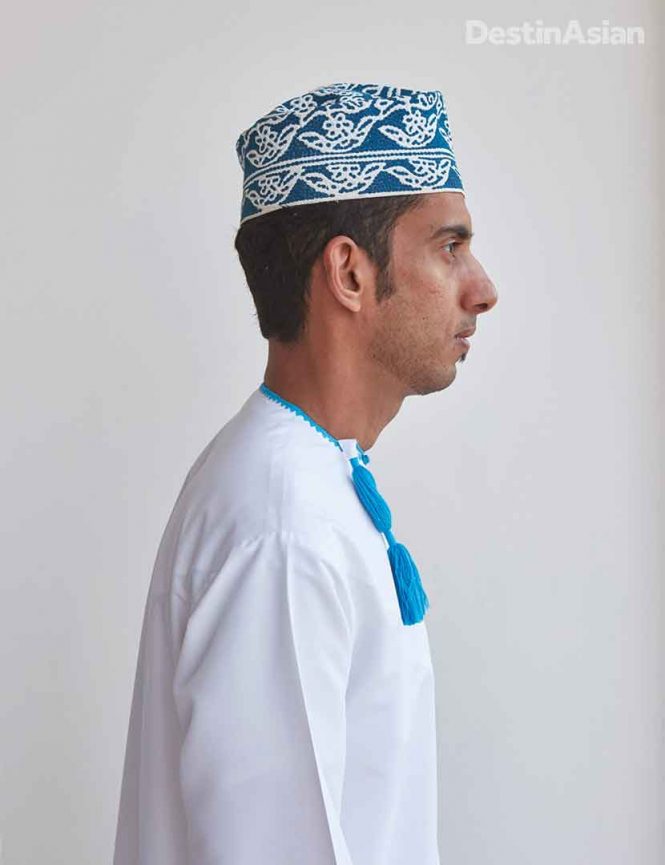
A dishdasha-clad doorman at Al Baleed Resort Salalah by Anantara.
Landing in Muscat four nights earlier on an Oman Air flight from Jakarta, Martin and I were whisked by chauffeur-driven SUV into the ink-black foothills of Jabal Akhdar in the Hajar Mountains, a craggy limestone range that rises between Oman’s cosmopolitan northern coast and its desert hinterland like a bulwark. For centuries a stronghold of tribal customs and rebellious imams, Jabal Akhdar was until 2005 virtually off-limits to outsiders. Now, to judge by the impressively engineered, military-built motorway that winds 1,700 meters up to the Saiq Plateau, the area is being groomed as a premier tourism destination, with two international resort properties already in place: one managed by the Singapore-based Alila group, and the newer, larger Anantara Al Jabal Al Akhdar, which bills itself as the highest five-star resort in the Middle East.
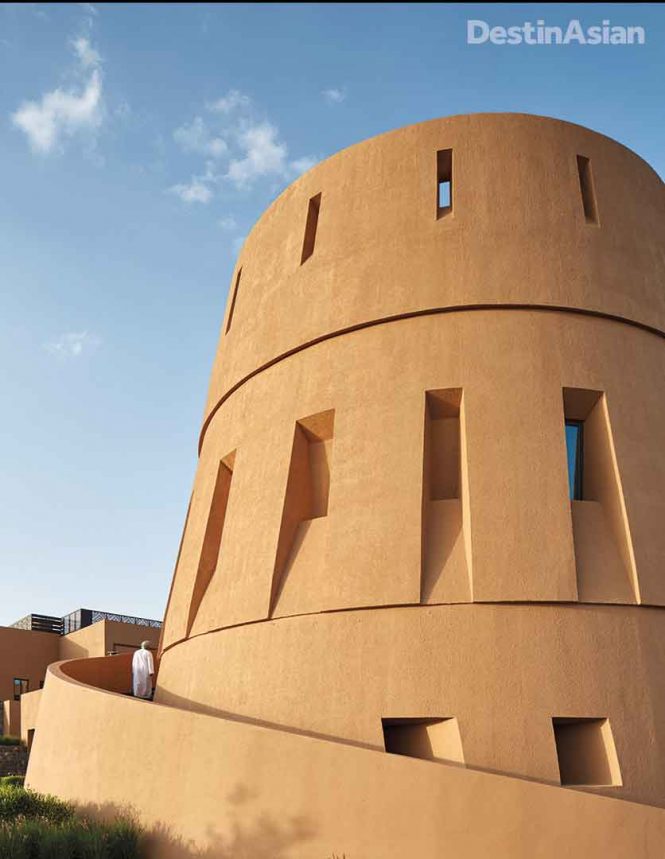
The circular tower at the Anantara Al Jabal Al Akhdar Resort
Arriving by night left me unprepared for the view that filled the floor-to-ceiling sliding glass doors of my villa at daybreak. The Anantara is built along the rim of a canyon in the heart of the Hajar massif, itself a spectacular geological pileup of bare, contoured grayish-yellow limestone that was once part of an ancient seabed. A strip of rocky ground is all that separates most of the 115 rooms and villas here from the yawning chasm, which gives way to an Old Testament backdrop of craggy mesas and defiles. You could take in this panorama from any number of vantage points at the property—the cliff-edge infinity pool, say, or Diana’s Point, a glass-walled platform built on the site where Diana, Princess of Wales is said to have stood in 1986 and lingered over the view herself. But if, like me, you had a cliff-side pool villa and a pair of in-room binoculars at your disposal, you’d be tempted to spend hours ogling the vista from the privacy of your own terrace—or even your bed, for that matter.
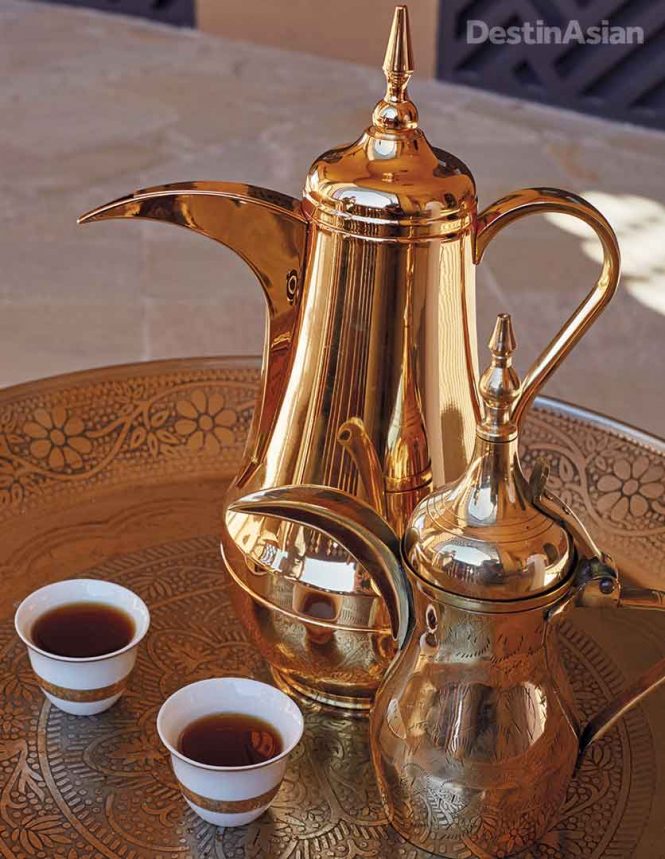
Tea time at the same resort
Spread across more than six hectares, the resort—designed by French–Moroccan architect Lotfi Sidirahal’s Paris-based Atelier Pod—has an architectural austerity that nods both to the local vernacular and the flinty mountainscape. (“It looks like a military camp!” Nabhan joked later on the road to Duqm.) But this is tempered by elegant interiors and features such as the riad-like courtyard off the lobby, where a central fire pit crackles in the cool evening air; a conical tower (inspired by a 17th-century castle in northernmost Oman) that houses both a Moroccan-style cocktail lounge and Al Qalaa, the resort’s excellent Arabian restaurant; a central garden showcasing local plants and herbs (juniper, camel grass, myrtle, fig); and trickling water features that pay tribute to the traditional Omani irrigation channel known as falaj. The climate is another attraction, offering a relatively cool respite for staycationers from Muscat or guests arriving from elsewhere in the Gulf region. “It snowed in February, if you can believe it,” one staffer told me breathlessly. I had my doubts, but I couldn’t deny the pleasant temperatures that greeted us on our April visit—not quite jacket weather at night, but never rising above 25°C during the day. In other words, perfect conditions for the Anantara’s menu of outdoor activities (rock climbing, archery, tennis) and excursions.
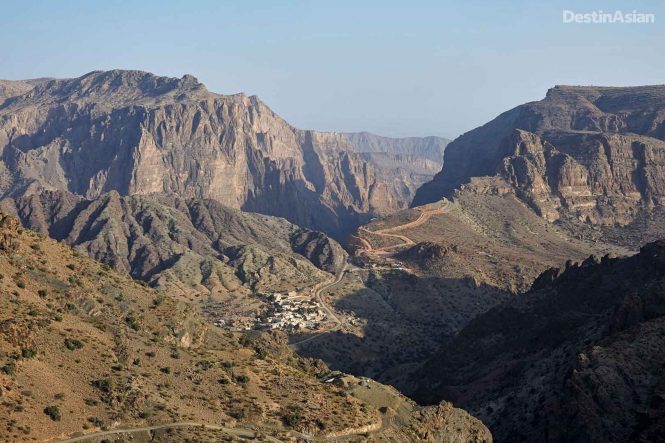
Overlooking the canyon below the Anantara Al Jabal Al Akhdar from its Diana’s Point viewing platform
One morning, a guide from the resort drove us out to Wadi Al Bawaarid for a hike down through the gorge, which took us alongside a dry riverbed and past still pools of algae-green water. Another outing involved a walk through a series of semi-abandoned villages not far from the resort. Their terraced gardens and orchards are still being farmed, but most residents have relocated in recent years to towns with modern infrastructure. Famed for orchards that produce pomegranates, walnuts, almonds, peaches, apricots, and pears, Jabal Akhdar is perhaps best known for growing damask roses, which come May blanket the slopes in velvety pink blossoms. From the flowers, distillers extract high-quality rose water for use in cooking, perfume, medicinal remedies, and, more recently, in treatments at the Anantara’s sublime, hammam-equipped spa. For now, though, the village streets were deserted, and I could only guess how this fragrant harvest would unfold once the picking season began.
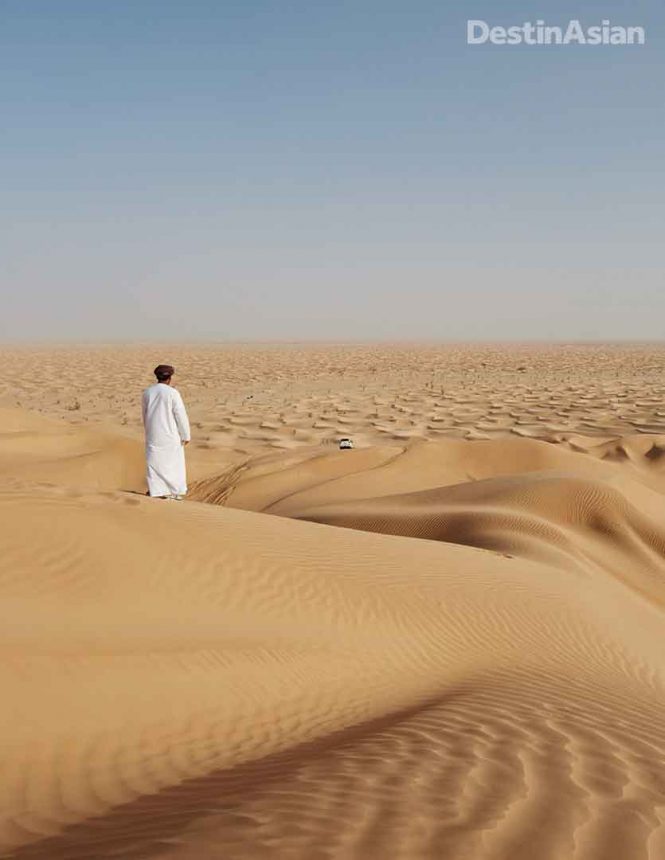
Amid the dunes of the Rub’al Khali desert in southern Oman


